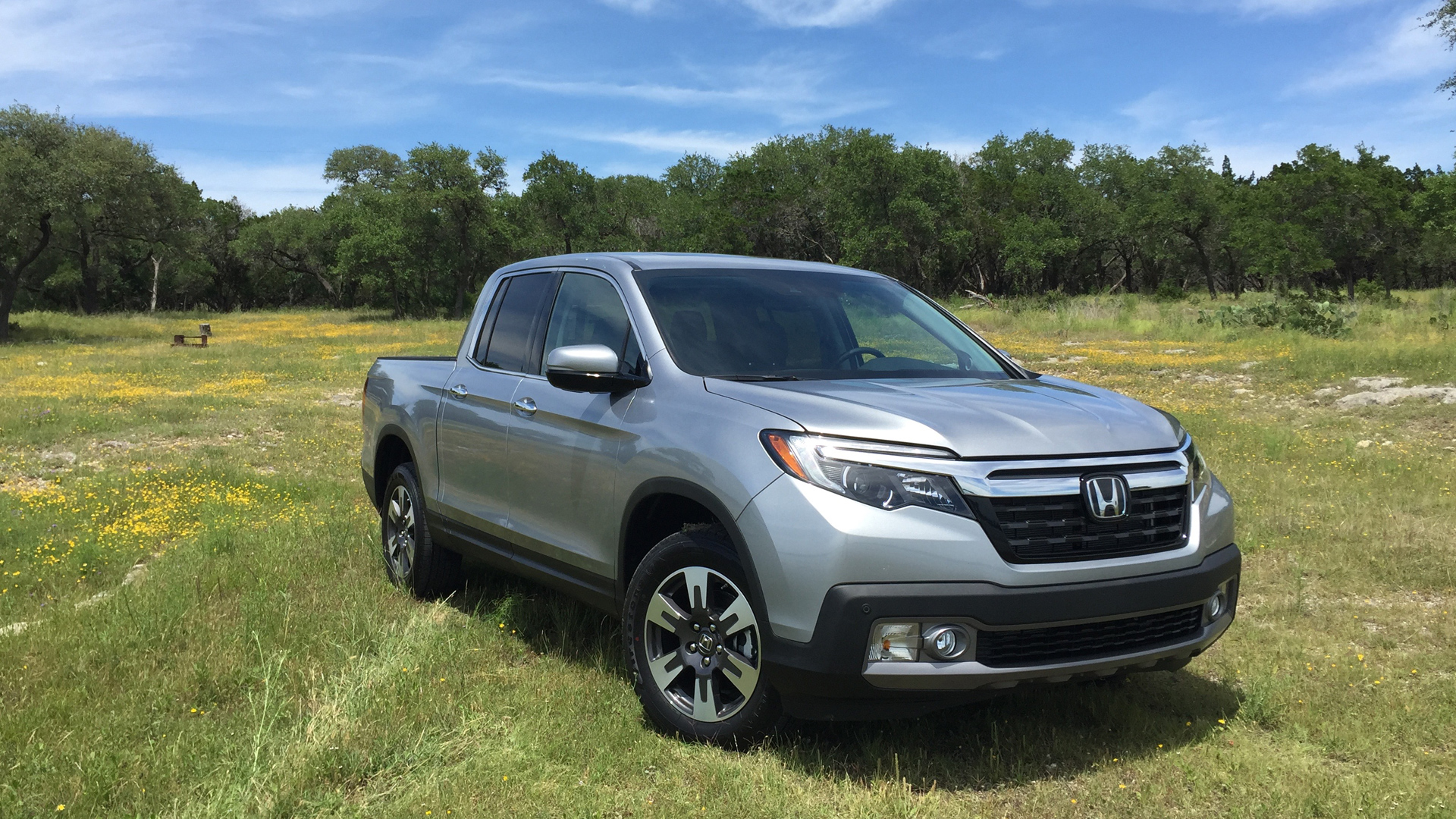Launching the 2017 Ridgeline in Texas seems to have been Honda’s way of declaring it’s not pussyfooting around in the pickup truck segment anymore. Honda’s unibody pickup may be reverse-engineered off the bones of the Pilot SUV, but it’s every bit truck enough for the majority of Americans—and people should treat it as such.
Just take a gander at the place where the truck bed and the C-pillar meet. There’s a gap, just like on real body-on-frame pickups. Honda offered up a whole bunch of practical reasons for the change—it makes assembly easier, it isolates the cabin, etc.—but we all know there’s another reason for that black line: So the Ridgeline doesn’t look like a kid playing dress-up when sandwiched between a Sierra and a Titan in the parking lot.

The Ridgeline, Honda is arguing, offers the best of both worlds: the handling and ride of a unibody platform, without sacrificing the benefits of a body-on-frame truck. And the truck’s specs back up the claims. The Ridgeline can tow 5,000 pounds or carry more than three-quarters of a ton of crap, all while offering what Honda says is a stiffer body, a quieter interior, and better fuel economy than other mid-sized pickup trucks. Sounds like one hell of a nice setup. And it is.
But here’s the thing: the Honda Ridgeline may be too nice.
Not nice in the loaded-down-with-amenities-like-a-Dubai-hotel-room sense. Clearly, the proliferation of F-150 Platinums and Silverado High Countrys and Ram Limiteds has demonstrated the market is down with carmakers barfing luxury features all over their pickup trucks. In that sense, the Ridgeline is actually rather spartan. (Then again, no other truck can match the Ridgeline’s optional truck bed audio system, which uses the side panel of the bed as a driver to pump out surprisingly clear sound. Paired up with the in-bed 150/400 watt inverter capable of running a big-screen TV and the recessed trunk that serves as a perfect ice chest, and Honda’s claims that the Ridgeline can be “the ultimate tailgate machine” seem right on point.)

But all those bougie trucks still drive like trucks. The Ridgeline does not. It drives like a jacked-up Accord. The steering is a little on the sensitive side, but offers more feel than the average truck tiller. The VTEC six-cylinder revs heartily, feeling stronger than the specs give it credit for. Hooked up to 4,800 lbs of glittery bass boat and trailer, it still felt plenty peppy. The six-speed automatic may be down a few cogs compared to the top of the truck world (or the Pilot it shares much of its bits with), but it’s never caught flat-footed.
The ride comes as close to nailing the perfect ratio of comfort and sportiness as any crossover ever has, let alone a truck designed to haul a half-ton of paving stones in its bed. Where other trucks shimmy over bumps and road imperfections, the Ridgeline sails. And the electronically-controlled limited-slip diff that can vector up to 70 percent of the driveline’s power to either wheel makes it a hoot to hoon on a back road, like a mutant Subaru that’s half-BRAT, half-WRX.
Which would seem, in principle, to be a coup for Honda. The Honda Ridgeline: Works Like a Truck, Drives Like a Car. The Honda Ridgeline: Your Coccyx Will Thank You.

But in practice, these qualities weirdly work against the Ridgeline. Driving around on both the open road and an off-road course Honda carved out of the Texas flatlands, I felt no qualms about throwing the Tacoma and Colorado around like power tools. I laid rubber in the Chevy, did donuts in the Toyota in a gravel lot. Who cares if it gets dinged up? It’s a truck.
But in the Ridgeline, I felt…well, like it deserved better. It’s so nice, you feel a little guilty wailing on it like a piece of replaceable machinery.

Part of that lies in the basic dynamics of the platforms. Every other truck on the market has rear-wheel-drive and a light tail end; physics demands it’s going to want to drift, twirl, and lay down rubber. The Ridgeline doesn’t. But another part of it simply boils down to the Ridgeline’s origins. Honda makes smooth, stalwart cars, vans and SUVs. Slice the rear roof one of those SUVs, and it’s still going to be a smooth, stalwart vehicle.
Then again, Honda isn’t expecting to sell the Ridgeline in F-150-like numbers. Considering just how perfect the Ridgeline would be for millions of pickup owners who rarely ever come close to pushing their trucks to the limit, the carmaker ought to be able to find at least 50,000 buyers who can see the value in picking the truck that drives like a car.
—
2017 HONDA RIDGELINE RTL-E
PRICE (as tested): $41,370 ($41,370)
POWERTRAIN: 3.5-liter, 280-hp V6; 6-speed automatic transmission; AWD
0-60 MPH: Less than seven seconds, according to my Citizen Eco-Drive
MPG: 18 city, 25 highway
TRUNK CAPACITY, IN 6-FOOT-4 SENIOR EDITORS: 0.75

